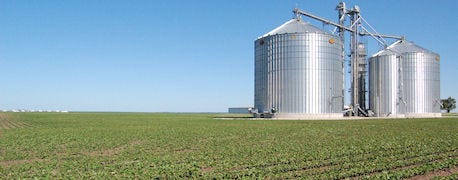
In recent years, Section 179 plus extra farm income has equaled a massive amount of capital purchases.
Today, only one half of the equation is there (if Congress decides to extend it). Numerous experts at the Farm Futures Summit warn that tax breaks alone do not justify capital purchases. Consider this little tidbit.
At lunch, a farmer was overheard saying "in the past two years, I've traded off stuff I would have kept farming with 10 years ago."

Time to put the brakes on capital purchases
The quip highlights the dangerous habits many grain farmers have picked up over the last five years. Using Farm Business Farm Management data, University of Illinois Extension specialist Dwight Raab notes northern Illinois growers spent an average of about $48,000 on capital purchases in 2004. By 2013, that number had ballooned to $210,000.
"Capital purchase decisions should not be made based on the tax benefit," Raab adds.
Looking at FBFM numbers put together by U of I economist Gary Schitkey, there should have been alarm bells in 2013. From 2010 to 2012, net income handily outpaced capital purchases across all Illinois grain farms. But, in 2013, capital purchases moved ahead of net income. With incomes projected to fall further for 2014 and 2015, growers will need to significantly throttle capital purchases.
Illinois' Raab and Schnitkey aren't the only ones cautioning against capital purchases. Bob Craven, a University of Minnesota economist, agrees saying now is the time to make a capital purchase budget. He recommends looking five to ten years down the road and putting each want and need under intense scrutiny. Don't let an end of the year tax gift justify an unnecessary purchase.
Looking at data from the FINBIN Farm Financial Database, Craven notes there's a little secret that high profit crop farmers have realized – it doesn't cost more to grow more bushels.
Examining the 2013 corn crop on cash rented ground in southern Minnesota, Craven notes the low-cost producers averaged 186 bushels, with a cost of production at $3.88 per bushel. The high-cost group netted only 150 bushels, and spent $5.77 per bushel growing it.
Where can budget cuts be made – without affecting the bottom line?
U of I entomologist Mike Gray gave a rousing presentation at the 2015 Corn and Soybean Classics. He noted five specific areas to cut back on crop protection expenses.
Cut out neonics on soybeans: Gray and 17 other land-grant entomologists agree that there is no reason to pretreat soybean seed with neonicotinoids. According to the letter they sent to EPA, "…data indicate in most cases there is no difference in soybean yield when soybean seed was treated with neonicotinoids versus not receiving any insect treatment."
Needle the seed salesman: In years past, ordering seed with every last bit of protection has become the norm. Yet, in most cases, growers aren't reaping the full benefits of these products. Take southern Illinois. By in large, growers in this part of the state do not have a western corn rootworm problem. And, European corn borer densities throughout Illinois remain at exceedingly low levels, Gray adds. Still, he realizes this can be problematic as seed companies often do not offer elite, high-yielding germplasm in their non-Bt hybrid lineup. At the Classics, numerous farmers agreed it is difficult to find non-Bt hybrids worth purchasing.
Know the economic threshold: Too many growers have been spraying without economic justification. Take Japanese beetle and bean leaf beetle infestations in soybeans. Gray notes 30% leaf defoliation before bloom or 20% between bloom and pod fill is the economic threshold. And, yet growers are quick to pull the trigger because "it looks bad" (about 10%). Taken to maturity, there is no significant yield difference. The same principle applies to soybean aphids. The economic threshold is 250 aphids per plant, with approximately 1,000 aphids per plant necessary to reach the economic injury level. But, many will call an applicator at the first sight of aphids in the field.
Check your Cry-proteins: The secret is out. Northern Illinois and now parts of Central Illinois have resistant populations of corn rootworm. Gray notes growers with a significant problem in the northern two-thirds of the state are probably dealing with a resistant population. In these situations, Cry3Bb1 and mCry3A are ineffective in many fields against this insect. Also, a segment of these populations have evolved to the point where even crop rotation will not control an outbreak.
Remember the disease triangle: This tip is from U of I plant pathologist Carl Bradley. For years, Bradley has warned against prophylactic fungicide applications. Looking at data from 2008 to 2014, he notes that fungicides have reached breakeven on payback (8 bu./acre) only 59% of the time – and that's in instances where disease severity was 10% or greater. When severity is less than 10%, breakeven occurs only 32% of the time.
A lot of farmers made much needed upgrades on the farm during the past five years of extreme profits. With grain prices much lower, capital purchases will be harder to justify moving forward.
About the Author(s)
You May Also Like




